Which pipes are best for a well: review and comparison of all types of suitable pipes
When planning to organize an independent water supply at home, it is necessary to study the technology and nuances of creating a well. One of the key points in arranging an autonomous water supply system is the choice of casing.
The well shaft performs diverse tasks and largely determines the durability and uninterrupted operation of an autonomous water supply system. Agree, having invested a lot of money and effort into the construction of a well, the last thing you want to do is eliminate problems associated with poor quality of water intake.
Therefore, at the design stage, it is necessary to approach the choice of casing string with all responsibility. We will tell you which pipes are best for a well, what material and type of connection of trunk segments is preferable to use in a given situation. The knowledge gained will save you from purchasing the wrong product.
The content of the article:
Well bore requirements
Setting up an individual source of drinking water is a costly and labor-intensive process. Investing in well drilling, every owner of a summer cottage or a private house expects to receive long-term results.
The service life, pressure of the well and the qualitative composition of the produced water largely depend on the characteristics of the pipes used to create the casing.
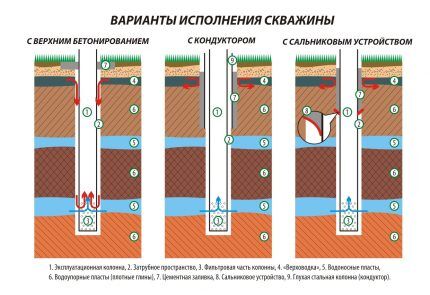
The water-lifting pipeline solves a number of important problems:
- protects the trench walls from collapse into the well space;
- ensures well integrity under pressure and ground movements;
- prevents pollution — ingress of untreated wastewater and groundwater (overwater) into the trunk;
- prevents siltation wells.
When drilling into one pipe, the casing string is also operational - it accumulates water from the aquifer, which the pump transports upward.
As a rule, drilling a well on a personal plot, if it is intended exclusively for irrigation and other household needs, is carried out in one column. For drinking water supply, the trunk includes two pipes: a casing and a carrying filter.
Therefore, high demands are placed on the quality and material of the pipes used:
- high strength and resistance to deformation throughout the entire service life (about 20 years);
- complete tightness walls and connections;
- immunity to corrosion and the negative effects of chemically active elements;
- environmental friendliness – the material should not affect the composition of the produced water;
- straightforwardness production string.
For standard applications, distortion along the length of the casing pipe is acceptable within 0.7 mm per linear meter.
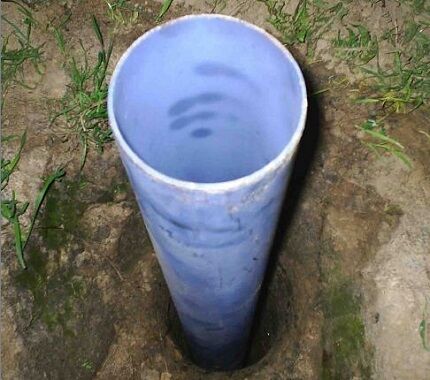
Casing Selection Options
There is no single true drilling standard. Method well organization determined on an individual basis.
Many indicators are taken into account: soil structure, height of groundwater and aquifers, pumping equipment parameters, water quality, drilling diameter and depth.
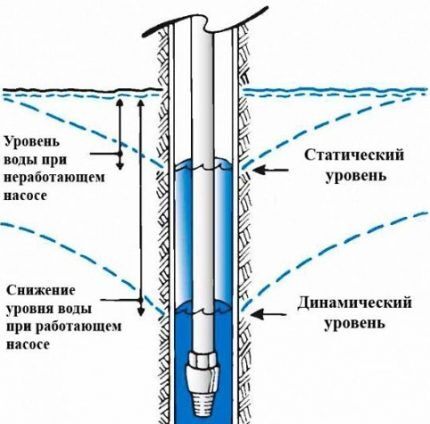
Any drilling company will offer its own version of the project and recommend, in their opinion, the optimal type of pipe. The final decision on the choice of casing is made by the customer.
The performing organization, first of all, defends its own interests, so their decisions are not always objective. Some contractors specialize in one type of device on the well system and try to “impose” an option that is beneficial to them.
The only right decision is to decide in advance which pipe to choose and use for the well, comparing all the pros and cons, and after that, apply for the development and implementation of the project.
When making a decision, you should take into account the main parameters for choosing a water-lifting pipe:
- Material of manufacture. This parameter determines the budget for installation work, bearing capacity for formation loads, maintainability and durability of the well.
- Method of joining column elements. The choice of method depends on the pipeline material, drilling depth and casing diameter. In any case, the connection must be completely sealed, otherwise over time the water quality will deteriorate, and the pump and well as a whole will fail.
- Pipe diameter. The value is calculated taking into account the maximum possible water consumption per day.
The larger the diameter of the supply pipeline, the higher the well productivity.
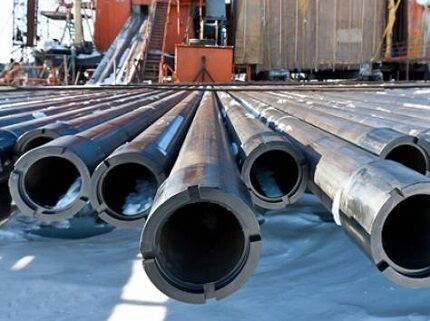
Types of materials and their characteristics
Borehole pipes are made of metal, asbestos cement or plastic. Very rarely, when organizing water intake, wooden products are used - they are absolutely environmentally friendly, but, despite the protective treatment, they are susceptible to soil moisture and are prone to deformation.
Type #1 - strength and durability of metal
Metal supply pipes are available in two versions:
- cast iron;
- steel, which can be enameled, galvanized, made of stainless steel.
Very rarely cast iron analogues are used for casing. Among their metal counterparts, these pipes are the most affordable, but the material is very fragile and heavy.
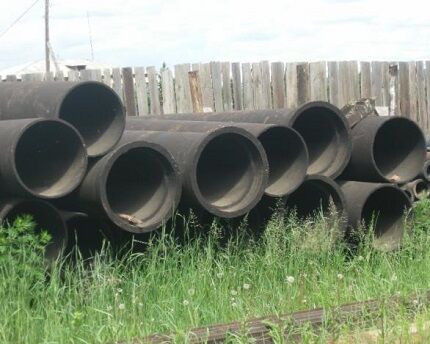
Steel is a traditional, decades-tested material for casing. The steel almost 100% meets the requirements for well pipes.
Products made of ferrous metal adequately withstand testing in wells of different depths, regardless of the type of soil.
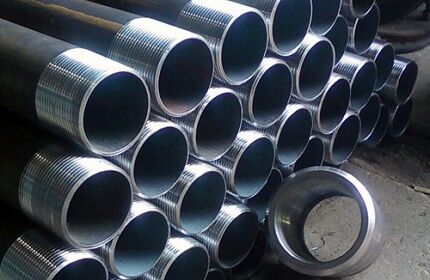
Arguments in favor rolled steel pipes:
- structural rigidity – the material is equally good for small wells (50 m) and for deep drilling (up to 300 m);
- precise axial alignment assembly and reliability of inter-pipe joints;
- material stability – upon contact with water, steel does not emit harmful substances;
- possibility of service – due to the mechanical strength and resistance to vibration in the installed casing, cleaning of the well channel and additional drilling in case of silting or clogging is permissible.
The main disadvantage of steel mains is the high cost of the material. Manufacturers of cheaper analogues, extolling their products, appeal to another disadvantage of steel - the formation of rust.
There is an opinion that the resulting pollution worsens the quality of water and increases the iron content in it. However well water tests show that this is a myth.
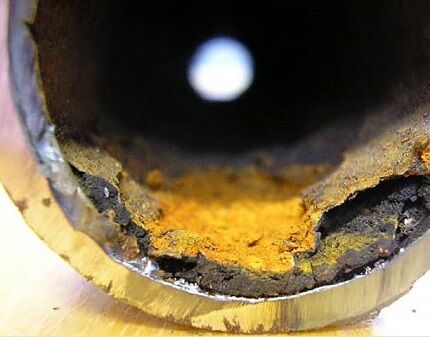
Rolled metal with corrosion protection is more expensive than conventional steel pipes, but the technical and operational features of the materials cast doubt on the advisability of overpaying.
Enameled pipes. The coating prevents corrosion, but it is very fragile and it is unlikely to be able to avoid damage during casing. Places of chips and microcracks in enamel are points where rust appears.
During the destruction process, through corrosion may form in the damaged area, since thinner metal is used in the production of enameled pipes.
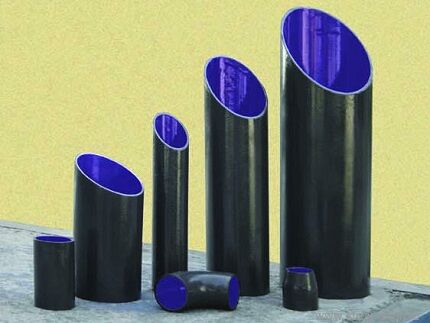
Galvanized pipeline. With regular contact with water, zinc oxide is formed on the walls of the pipe - a substance hazardous to health. The use of galvanizing is permissible only when constructing a technical well.
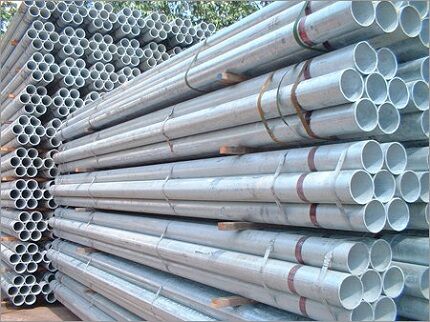
Stainless steel. The material has all the advantages of rolled steel and an even higher cost. Stainless steel is characterized by its anti-corrosion resistance, which has a positive effect on its service life.

The installation of a metal main is economically justified when constructing a deep artesian well designed for regular use.
It is advisable to make “surface” sand channels for seasonal use from more affordable materials.
Type #2 - corrosion resistance of asbestos cement
Asbestos cement pipes, which have been used in the organization of water disposal for more than 70 years, have also been tested for years.
The material has some positive qualities:
- asbestos cement is absolutely not subject to corrosion;
- neutral composition of the material - the components do not enter into chemical reactions;
- unlimited service life - more than 60-70 years;
- low cost.
Despite their significant advantages, asbestos-cement elements are rarely used today in the development of a “water source”.
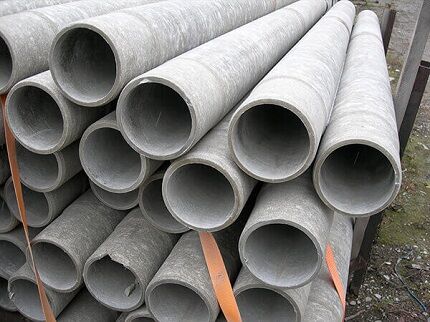
The negative aspects of asbestos cement include:
- Installation difficulties. Installation of a fragile main requires highly qualified performers. The work is carried out using lifting equipment.
- No thread. The sections of the main line are connected end-to-end - achieving complete tightness of the fixation points without threads is problematic.
- Questionable security. There is a theory that asbestos fibers contain chrysotile, a source of carcinogenic substances that have a detrimental effect on health. However, in practice this statement has not been proven.
- Difficult to clean. Concrete is a porous material in which dirt accumulates in microcracks. To perform high-quality cleaning of the casing walls, the well will have to be completely drained.
After installing the asbestos-cement casing, subsequent drilling operations in the well are excluded.
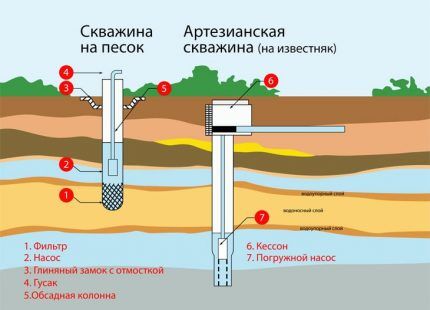
Type #3 - wear-resistant and affordable plastic
Relatively recently, the market for casing products has been replenished with plastic pipes. Modern technologies have provided worthy competition to traditional steel pipes.
Comparative advantages of polymer elements:
- immunity to water - even with constant contact with a humid environment, corrosion does not form on the plastic;
- retain their structure for a long time and do not collapse;
- do not affect the composition of drinking water;
- the material does not provoke the development of pathogenic microorganisms;
- ease of installation and transportation due to low weight;
- it is possible to use a threaded connection to assemble the column, ensuring absolute tightness of the joints;
- cost-effectiveness - a well with plastic pipes will cost an order of magnitude cheaper than metal or asbestos-cement casing.
The expected service life of a polymer water main is about 50 years. This theory is based on the corrosive inertness of the material.
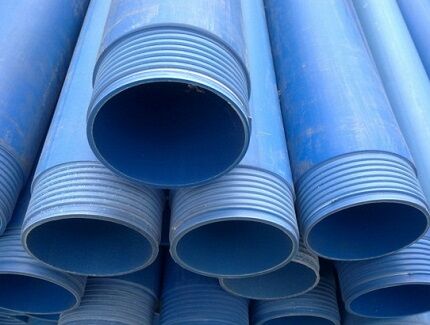
An additional argument against the use of plastic elements is sensitivity to temperature changes and mechanical stress. The plastic casing will not withstand soil movements and will deform in severe frosts.
Polymer water intake pipes are made from different types of raw materials: unplasticized polyvinyl chloride (UPVC), frost-resistant polypropylene (MPP) and low-density polyethylene (HDPE).
Selection of supply pipe for well pump carried out on the basis of the technical characteristics of the polymers.

The weak point of elements made of unplasticized polyvinyl chloride is sensitivity to frost. This problem is solved by installing a heating cable in the well.
Polymer MPP and HDPE pipes have good frost resistance. However, their density is often insufficient for use as a stand-alone casing. Most often, such plastic is used as a production pipe for double-column well construction.

Type #4 - combined pipeline
In order to reduce corrosion processes and improve the quality of supply water, some drilling companies offer to casing the well according to technology "pipe in pipe".
A plastic channel made of food-grade HDPE polymer is inserted into the steel line.
Advantages of the combined method:
- Anti-pollution. The plastic pipe acts as a kind of barrier between the water and the steel walls of the casing - less rust gets into the line, which is dangerous for the pumping unit.
- Maintainability. If the production polymer pipe is damaged, it can be replaced with a new one, maintaining the integrity of the casing;
- Possibility of subsequent deepening of the well. If necessary, the plastic “sleeve” is pulled out, the hole is drilled out, and the polymer line is installed back with emphasis on the new horizon.
The “pipe-in-pipe” technology allows for high-quality service the well – clean regularly and change promptly filter.
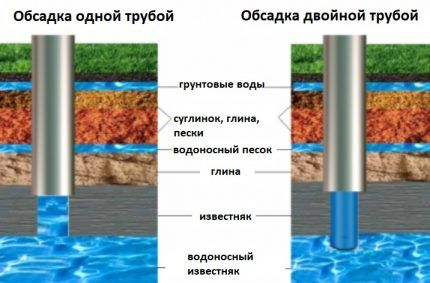
Which column assembly option is better?
A set of requirements for casing pipes and technologies for connecting well string segments is reflected in GOST 632-80. The regulations allow the use of different assembly methods.
Based on the joining method, the appropriate type of pipe is selected, so this issue must be resolved at the well design stage.
No. 1 - permanent contact of pipes for welding
Welding provides the most rigid connection of metal pipes. The main advantage of the method is now being questioned by representatives of a number of drilling companies.
Arguments against using welding:
- the likelihood of insufficient sealing of the weld;
- the possibility of pipe deflection along the vertical axis, which makes it difficult to install the column in the well;
- insufficient corrosion protection of the seam.
However, with a high level of professionalism of the welder, the listed defects will not occur. Most building structures (bridges, trusses, oil pipelines) are made of steel and, as a rule, they are welded.
Another issue is that high-quality work requires welding equipment and the involvement of a qualified electric welder. These measures increase the cost of work performed, reducing the profit and competitiveness of the performing organization.
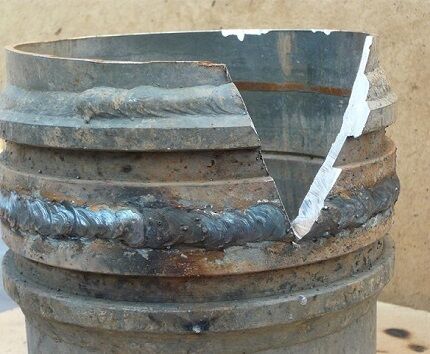
No. 2 - water-lifting channels with threads
When casing a well with rolled metal, 90% of drilling companies use a threaded connection, pointing to GOST standards. It sounds quite convincing, but managers of organizations often keep silent that the standards are relevant for pipes with a diameter of 146 mm and a wall thickness of at least 6 mm.
The use of threaded technology significantly reduces the service life of the casing.
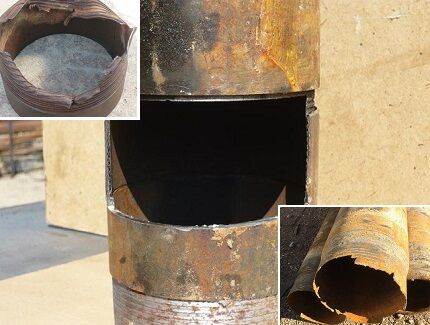
The use of a threaded connection on plastic lines does not have such disastrous consequences, but, on the contrary, is considered the most reliable.
There are several options for joining polymer pipes:
- Nipple. The thread is cut from the inside of plastic pipes. The two elements are connected through a nipple with an external thread. The diameter of the hole does not increase.
- Coupling. There is an external thread at both ends of the pipe. Docking occurs using an overhead coupling, which increases the diameter of the penetration.
- Socket threaded. Segments with threads on the outer and inner surfaces are used - joining is carried out without additional elements.
With socket joints, a slight expansion of the diameter at the joints is permissible.
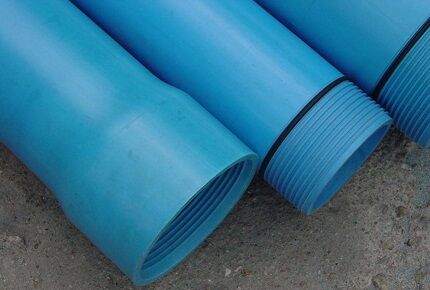
Pressure or non-pressure pipeline?
The only correct option is to use pressure pipes. Only such products can withstand double-sided pressure. From the outside, the walls of the column are affected by the buoyancy of the soil, and from the inside by water pressure.
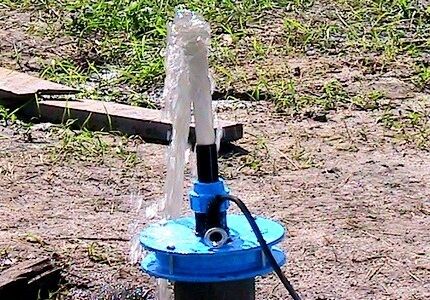
The video reviews below will help you decide on the most optimal well casing option.
Conclusions and useful video on the topic
Comparison of the quality of threaded connections on PVC-U pipes:
Overview of welded and threaded steel pipes:
Checking the strength characteristics of metal and plastic pipes:
From all of the above, the conclusion suggests itself: for a house with year-round residence, where a well is the only constant source of drinking water, it is important to ensure the stability and reliability of the water pressure system.
The best option is a two-pipe column made of steel and plastic. The polymer is suitable for shallow mines when constructing a “seasonal” well.
Are you looking for a suitable pipe option for constructing a well? Or have you already made your choice? Please leave comments on the article and ask questions that interest you. The feedback form is located below.




Whatever one may say, I am of the unshakable opinion that the most reliable option is to use steel pipes. Even though they cost an order of magnitude more than alternative polymer products, they will last much longer, without compromising the quality of water, which is extremely important.There is definitely no point in saving in this kind of matter. But cast iron, as for me, is not an option at all.
The water quality is deteriorating greatly! It stinks of rust and turns red. It's a real problem!
I have been working in this field for a long time. Therefore, I boldly say that no one has installed steel pipes for a long time (they simply rot, pressure drops due to leaks, and they are expensive). The first place in demand is occupied by plastic pipes, since people are familiar with them, but we still recommend asbestos-cement pipes, the price is not high, the quality is excellent. I advise you to approach this matter seriously to avoid unnecessary costs in the future.
Is it okay that asbestos is extremely harmful? Such recommendations from a “specialist” are surprising, to put it mildly.
It so happened that I had no pipes in the well at all. Just a hose and a pump. There was dense loam on top, which holds the walls even without casing, and water was discovered in limestone, which they also decided not to casing at all. The method, of course, is risky, since at any moment the loam could collapse and clog the excavation. We would have to drill again. And it’s not a fact that during drilling they would have hit the same trunk. With pipes everything is much more practical and reliable, but also more difficult to install.
Still, what casing pipe should I use? Is it worth stopping at modern steel or is it better to buy HDPE if the well is about 40 meters? We plan to arrange it at the dacha for watering and drinking. More in summer, less in winter (respectively).